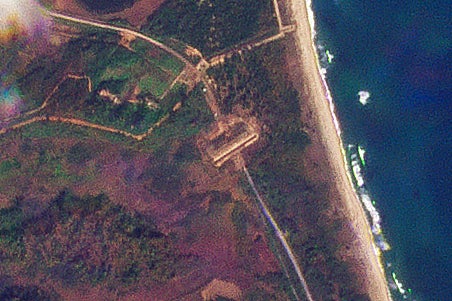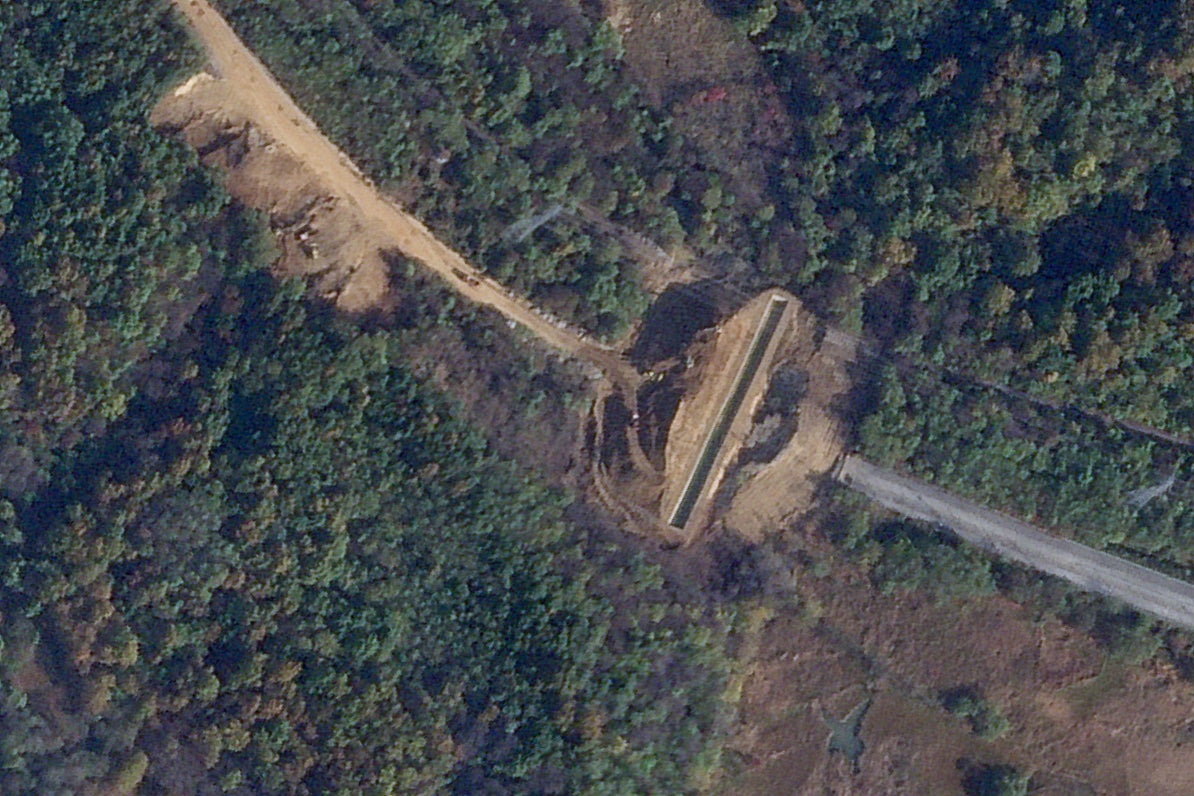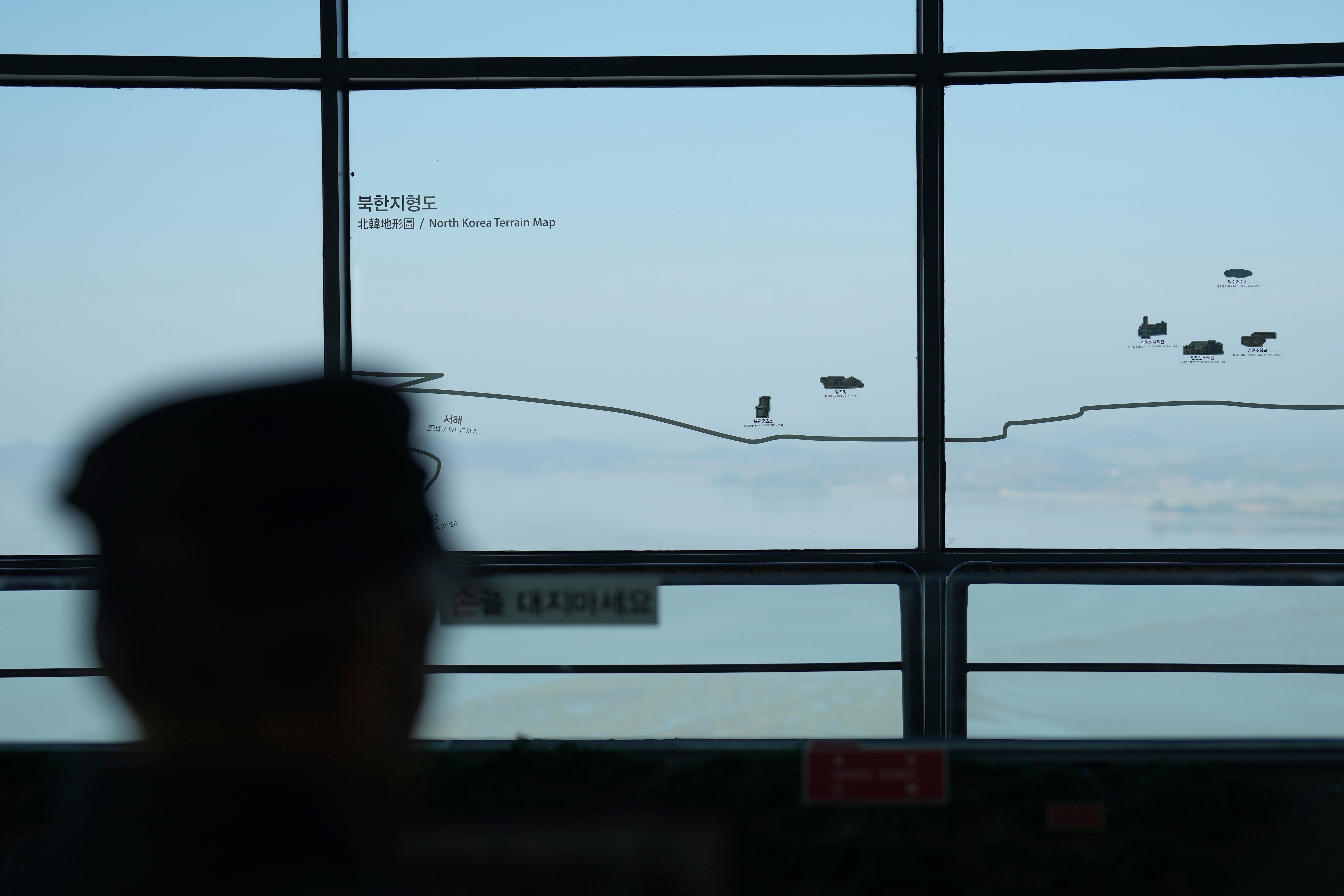North Korea satellite images show mystery trenches dug at border
Vehicles could be seen at the site of the trench, including what appeared to be earth-moving equipment

Your support helps us to tell the story
From reproductive rights to climate change to Big Tech, The Independent is on the ground when the story is developing. Whether it's investigating the financials of Elon Musk's pro-Trump PAC or producing our latest documentary, 'The A Word', which shines a light on the American women fighting for reproductive rights, we know how important it is to parse out the facts from the messaging.
At such a critical moment in US history, we need reporters on the ground. Your donation allows us to keep sending journalists to speak to both sides of the story.
The Independent is trusted by Americans across the entire political spectrum. And unlike many other quality news outlets, we choose not to lock Americans out of our reporting and analysis with paywalls. We believe quality journalism should be available to everyone, paid for by those who can afford it.
Your support makes all the difference.Satellite images have revealed that North Korea carved at least two large trenches across roads and rail lines on its heavily armed border with South Korea.
The move comes since it blew up the northern sections of cross-border routes earlier this month.
The purpose of the trench is unclear at this point. It is estimated the trench at the eastern crossing is slightly longer at 150 meters (492 feet) and has dirt and land clearance only on one side.
Satellite images taken Wednesday by Planet Labs PBC showed a trench cut across a road and a rail line running through the western part of the Demilitarized Zone between the Koreas.
Tensions between the Koreas are at their highest point in years as North Korean leader Kim Jong Un has repeatedly showcased his expanding nuclear weapons and missile programs, while reportedly providing Russia with munitions and troops to support President Vladimir Putin’s war in Ukraine.
Kim has vowed to sever relations and abandon the long-standing goal of reconciliation with South Korea, whose conservative government has taken a hard line on the North's nuclear ambitions.

Work on the trenches appears to have begun shortly after North Korea staged choreographed demolitions of a road near Kaesong, a western North Korean border city, and a combined road and rail section near the Koreas’ eastern border on Oct. 15. In Planet Labs images examined by the Associated Press, the first sign of the trenches appeared on Oct. 17, after cloud cover blocked the view for the four previous days.
The western trench is 1.7 kilometers (1 mile) west of Dorasan Station, the last station on the line on the South Korean side that used to run to a now-shuttered factory complex in Kaesong. The factories, which symbolized a past era of rapprochement between the rivals, were jointly run by the Koreas until Seoul shut it down in 2016 over a North Korean nuclear test.
Some vehicles could be seen at the site of the trench, including what appeared to be earth-moving equipment.
Similar work was observed at a crossing between the two countries along the Korean Peninsula’s eastern coast. It slices across the road just before a North Korean border gate in the DMZ.

Analysts at the North-Korea focused website 38North, who first reported the existence of the trenches, said the work began almost immediately after North Korea blew up the roads and rail sections.
The analysts estimated that the western trench is about 125 meters (410 feet) long and about seven meters (23 feet) wide, with large piles of dirt on either side of it.
“The purpose of the trench and dirt is unclear beyond it being some type of blockade that is intended to sever the transportation links. The mound could be part of the barrier, or it could be a temporary product of the construction work,” the analysts wrote. They said several trucks were still visible at the site, indicating that work is not yet complete.
On Thursday, North Korea test-fired an intercontinental ballistic missile for the first time in almost a year, possibly taking another step in building an arsenal that could viably threaten the U.S. mainland.